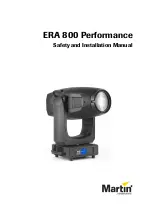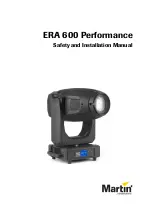
CAUTION
:
Do not use tubes/bottles that have exceeded their life expectancy. Failure to do so
could result in damage of tubes/bottles and the rotor and the centrifuge.
The life expectancy of tubes/bottles depends on factors such as the characteristics of
samples, speed of the rotor used, and temperature.
Always check for deterioration and damage (cracks, deformation, and so on) on
tubes/bottles before using them. Do not use the tubes/ bottles if you find such a
problem.
Conditions and life expectancy of tubes and bottles
The life expectancies of plastic tubes and bottles depend on factors such as the characteristics of samples,
speed of the rotor used, and temperature.
When plastic tubes/bottles are used for centrifugation of ordinary aqueous samples (between pH5 and pH9),
their life expectancies are specified as follows.
When operated for 1 hour at the maximum speed:
Tubes (PA, PC, PP) ······································ 5 operations
Thick-walled tubes and bottles (PA, PC, PP) ······ 50 operations
himac 50 TC tubes and tubes on the market ······ 1 operation
The life expectancies of the PC bottles are specifically specified as follows according to the pretreatment
conditions such as cleaning and sterilization.
Sample
Gas sterilization and cleaning
with warm water
Autoclaving at 121°C
for 20 min.
Neutral (PH7)
50 operations
10 operations
Alkalescent (PH7 to 9)
30 operations
5 operations
Do not use crazed (cracked) tubes or bottles.
The life expectancy of a plastic tube/bottle as the above is an approximate guide. We do not warrant the life
expectancies of tubes/bottles.
Cleaning and
sterilization
9. Tubes and Bottles
9-2
Summary of Contents for CR21N
Page 2: ......
Page 10: ...MEMO ...
Page 107: ...APPENDIX ...
Page 110: ...MEMO ...
Page 111: ......







































